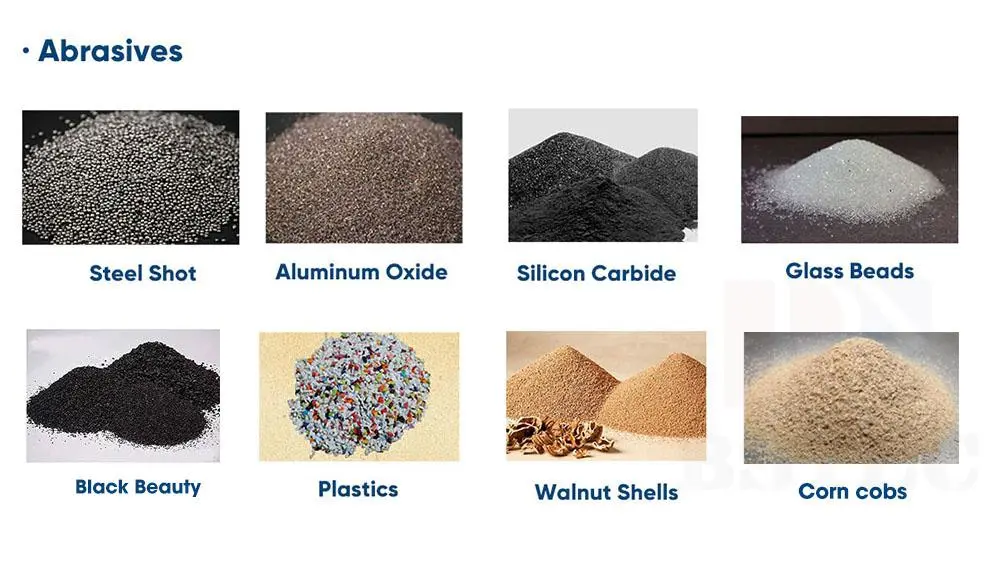Choosing Blasting Abrasive Media
Choosing Blasting Abrasive Media

Both simple and advanced equipment designs are used in abrasive blasting systems. However, neither system could work without abrasive media. This material is the heart of the abrasion blasting process, and it’s available in different forms intended for various applications.
With air blast systems, the media enters the compressed air stream from a pot or container. Valves funnel the media stock into the blast hose, and a recycling system allows the media to return. Centrifugal shot blasting systems also have a holding container. This system uses a mechanical feed to send media into the spinning wheel and onto the treatment surface before being collected and recycled.
Abrasive materials can be mineral, organic, ceramic, plastic, or metal-based. Each chemical base performs specific abrasive tasks and possesses key abrasive properties.
There are four properties that need to consider in abrasive blasting operations:
1. Shape: Media particle shape is critical to the final surface finish. Round-shaped particles are less abrasive than angular shapes.
2. Size: Media particle size is measured in “mesh.” This is a screening determined by holes per square inch where fine media size filters through more holes in a mesh screen compared to larger particles.
3. Hardness: Hard particles like steel shots penetrate deeper into materials than soft media such as plastic particles. It’s critical that blasting media hardness be compatible with the surface to avoid irreversible damage.
4. Density: Dense media particles have more mass per size than lightweight material. Like hardness, the right media density is essential to do the job efficiently without compromising the treatment surface.
Each different blast abrasive media material has its own qualities beyond shape, size, hardness, and density. Media material selection primarily depends on the surface being prepared or treated, not necessarily on the type of abrasive equipment being used. Here are the common abrasive media materials you’ll find in abrasive blasting operations:
· Steel shot and steel grit: Steel shot is round while steel grit has an angular shape. It is a highly effective abrasive for its roughness and high recyclability. For heavy-duty jobs, nothing beats steel abrasives.
· Aluminum oxide: Aluminum oxide features its high hardness and strength. For hard surfaces that require fine polishing, aluminum oxide is a perfect media. It’s hard, reusable, and low-cost.
· Silicon carbide: It is the hardest abrasive material available. This media comes in sizes ranging from fine powder to coarse grit. It is fitting well in cleaning the most challenging surface.
· Glass beads: It is round soda-lime glass. Compared with other materials, glass is not as aggressive as blasting media like steel shot or silicon carbide. Abrasives of glass beads have minimal stress on the surface to produce a bright and satin matte type finish.
· Black Beauty: This is a coal slag material. Black Beauty is extremely coarse and suitable for heavy rust and paint removal.
· Plastics: Abrasives made from plastic vary in size, shape, hardness, and density. Plastic materials include polystyrene and polycarbonate. It is a soft abrasive that is ideally for fiberglass treatment, mold, or plastic parts cleaning.
· Walnut shells: Black walnut shells are excellent abrasives for soft metal and plastic surfaces. Walnut shells are inexpensive and readily available as well as being compostable.
· Corn cobs: Like walnut shells, corn cobs are soft organic abrasives. They’re used on delicate surfaces to remove contaminants like grease, oil, and grime rather than rust and paint.














